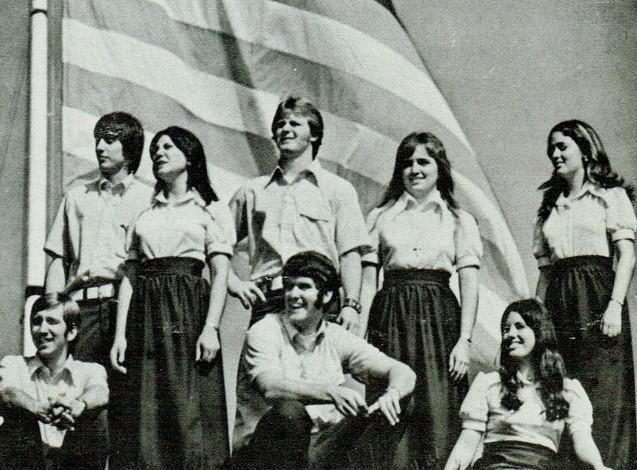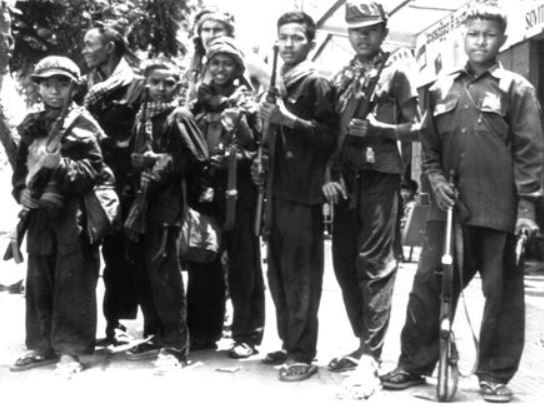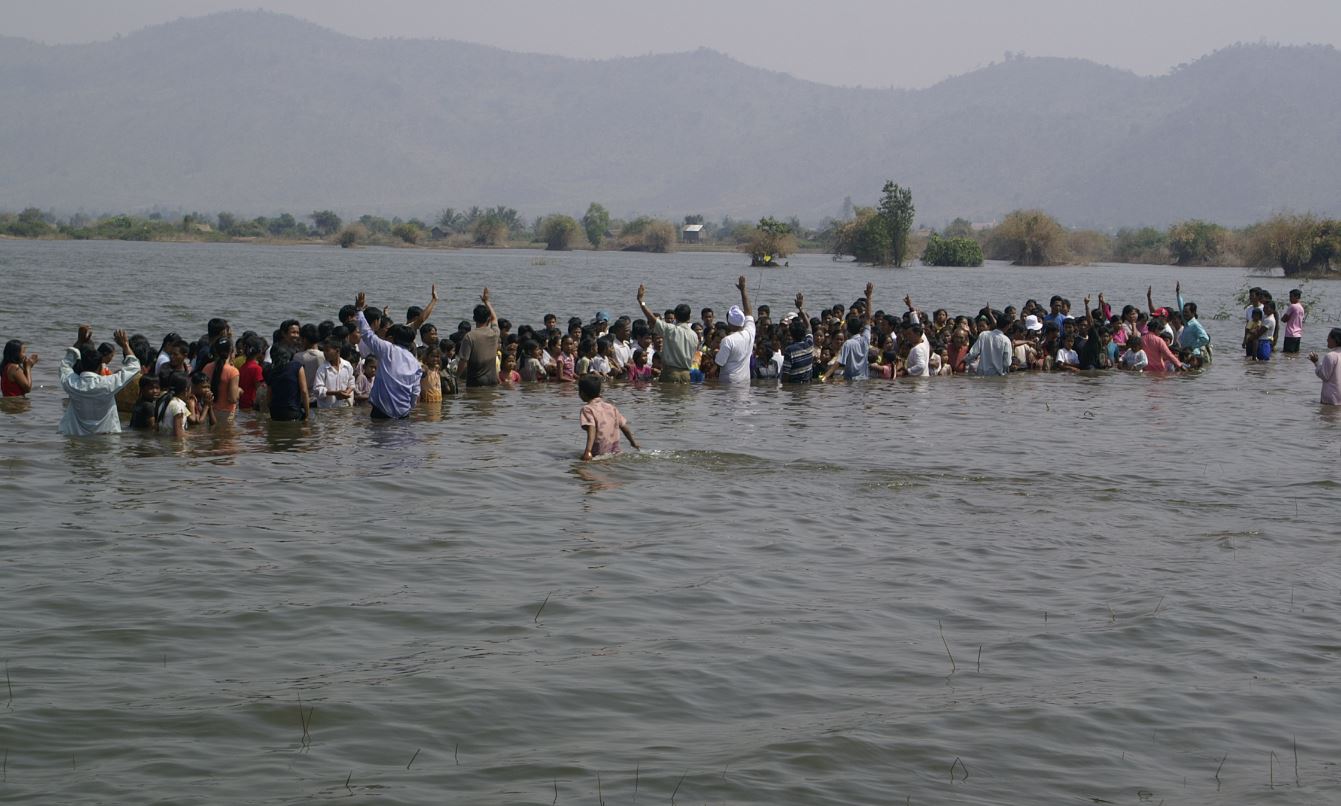

Background
This revival account occurred during the middle of the brutal Cambodian Civil War (1967-1975), involving the Kingdom of Cambodia and the communist Khmer Rouge.
Main Characters in the Revival
Todd and DeAnn Burke, having felt a strong calling to serve as missionaries in Cambodia, had enrolled at Oral Roberts University. After graduating in May 1973, at ages 22 and 21, they immediately had doors open for them to take steps toward Cambodia.
In June 1973 they were invited by a missionary to fill in and serve as an interim pastor of an English-speaking church on the island of Okinawa, Japan, in a church made up primarily of United States military families. They agreed to do that from June-August while that missionary returned for a visit to the United States.
After that missionary returned at the end of August, Todd made plans to go to Cambodia to “spy out the land,” while DeAnn remained behind in Okinawa.
Having obtained a 7-day tourist visa to enter Cambodia, Todd was able to move into a home rented by other missionaries who had just left. That home had several months’ rent already paid in advance, and had a Cambodian family living there, taking care of it.
English Classes
Upon Burke’s entry into Cambodia, he quickly found the home the previous missionaries had told him about, made acquaintance with the house keepers, as well as with a few other believers, and he asked them
What could we do to start a work for the Lord?
The response was to teach English classes, and that is what he did. Using the Bible as the textbook, and selling portions of the Gospels, they would go verse by verse, teaching English, but evangelizing at the same time.
The lessons were scheduled to last one hour, but soon were lengthened to two, as the interest of the students quickly turned from English to Christ. On the fifth day of these English classes there were 90 in the afternoon session and 94 in the evening session—with them being more of a house church than an English class. Before long, those numbers mushroomed to 300, with people being saved every day.
Gospel Crusade at the Stadt Olympic Arena
During that first week in the country Todd Burke traveled back and forth to the immigration office trying to get an extension on his visa. On these trips to that office, he noticed two arenas. He dreamed about the possibility of having a meeting in the 8,000-seat indoor arena. He did not know that at that time the government had shut them down due to the civil war and the possibility of a terrorist attack during large gatherings.
Todd asked his English class students if anyone knew how to request the use of the stadium, and one man said he did, and in less than an hour Todd was standing in the office of the Minister of Foreign Affairs. Three days later, approval was given for the use of the stadium, which would be granted free of charge, including a free sound system as well as military and police protection. At this same time Todd was also granted a diplomatic multiple entry visa that would be valid for one year.
Gospel Crusade
Todd contacted his wife and told her she could now come to Cambodia, and he also contacted a singing group that was touring Asia at that time—the Luminaries. They would provide the musical accompaniment to the crusade.
The promotion for the September 28 – 30, 1973, crusade was conducted using thousands of posters and flyers in the Khmer language, as well as newspapers and radio advertisements. On their promotions was the sentence:
Bring your sick, blind, and lame and believe God for healing.

The Luminaries
Standing: Tim Taylor, Chris Friesen, Roger Hendrix, Linda Wiley, and Patti Crowell
Sitting: Jimmy Carothers, Dan Harding, and Debbie Gabbert
On the first night of the crusade, with about 5,000 present, the Luminaries began to sing, capturing the attention of the crowd. Following them, Todd preached, and then prayed for mass healing. One woman came forward testifying she had been totally blind for many years but now could see clearly.
Another man had been carried into the meeting lame. After prayer he sensed strength coming into his legs and found that he could walk again.
Todd’s English students began walking through the crowd, handing out literature and Gospel portions, counseling those who had come forward to receive prayer, and answering questions of those wanting to be saved.
During the second day’s meeting, there were so many healings they couldn’t record them all.
On the third day, the news media was present (The Associated Press, Washington Post, CBS, etc.), setting up cameras and microphones. The reporters said that this crusade “is the biggest story in Cambodia,” and they were going to broadcast it in the United States.
On this final day of the crusade, the stadium was estimated to have 8,000 in the stands and on the main floor.
Many healings occurred on this final night, and in response to the invitation to accept Christ:
A sea of hands raised before us. Our students and workers moved into the crowd to pray and counsel with as many as they could reach, handing out tracts and gospel portions, instructing people where they could go to learn more about Jesus.
The news of the crusade reached the United States through the various media outlets, and newspaper clippings were sent back to the Burkes, with headlines that read:
“Evangelist Visits Buddhist Nation”
“ORU Grad Preaches to 5,000 in Cambodia”
Read the uncomplimentary New York Times article here.
Prior to the crusade the Burkes were barely surviving financially, but after the attention given to them through the news outlets, donations started arriving, enabling them to expand their ministry among the many new Christians.

Some of the main locations where churches were planted.
Church Planting
Following the crusade, the Burkes continued their English classes and Bible studies. The numbers of people they were ministering to grew to about 1,000. This led to the start of a church, which they named Maranatha.
Ministry Involved:
► Prayer meetings every morning from 7-8 a.m.
► Much time was spent answering Buddhists’ and former Buddhists’ many questions.
► Dealing with demonization.
► Teaching and training believers.
► With government schools shut down due to the war, they were ministering to hundreds of children every day.
► Baptizing about 20 people per week.
Raising up Leaders
Other churches and house churches began to be planted, and that required the release of control into the hands of the Cambodian believers.
► Cambodians rose to positions of leadership.
► Discipleship materials were developed and used extensively.
► Due to the war, and the severe conditions that were experienced by Cambodians in general, many began questioning their Buddhist beliefs. The previously hardened Buddhists began to be open to the Gospel and the believers were carrying out evangelism, with the children also engaged in this work throughout their neighborhoods.
► Dozens of people were being converted every week.
► Many miracles were occurring, confirming the word that was being preached.
► Powerful visitations of the Holy Spirit were common, with many being baptized in the Holy Spirit.
Burkes Depart from Cambodia before the Bloodbath
The Burkes left Cambodia on March 29, 1975, just a few weeks before the communist Khmer Rouge defeated the government forces and took the capital city of Phnom Penh, on April 17. And with this overthrow,
Almost overnight the horrors of the predicted bloodbath began. When reports of the new regime’s atrocities began to filter out of Cambodia, the western world was numbed with shock.

The Communist Khmer Rouge soldiers were made up
primarily of those in their teens (boys and girls),
with some being as young as 10 years old.
The Communist Killing Fields
Much has been written about Pol Pot and his brutal communist leadership that led to the mass killings of around 2 million people out of a population of 8 million.
Ninety percent of the Christians, and almost all the Christian leaders, were martyred or fled the country, escaping to Thailand where refugee camps were set up. One of the believers that was part of the Burke’s ministry had a very powerful ministry among the Cambodian refugees in Thailand, resulting in many hundreds of them turning to Christ.

Baptism in Cambodia
Number of Christians in Cambodia
► In 1970 there were only 700 Christians in Cambodia—with missionaries having been expelled in 1965.
► Between 1970-1975, with missionaries allowed back in, the number of believers in the country grew to 10,000.
► By 1975, the numbers dropped to 200, with most being killed, and some having fled as refugees to Thailand.
► In 2022, the number of Christians in the country grew to 595,880 (3.48%), out of a population of 17,123,000, and it is growing at 8.8% a year.
Tragic Ending for Todd Burke—Warning for Us Today
Despite having God use him in such a powerful way, Burke turned from his faith in Christ after the 1989 shooting death of his 11-year-old son. He was said to have blamed God for that death and became filled with rage and hatred toward God. He subsequently divorced his wife and embraced a spirituality that included a mixture of Shamanism and New Age teachings. Todd was said to have become a “living example of an enlightened Being.”
Todd Burke died in a car accident on July 27, 2006, at age 56.
Sources
► Anointed for Burial by Todd and DeAnne Burke
► Almighty Is His Name: The Riveting Story of SoPhal Ung by Randy Clark
► Cambodia by Joshua Project
► Cambodian Civil War by Wikipedia
► The Christian Church in Cambodia by Cambodian Communities Out of Crisis
► Cambodian Genocide by Wikipedia
► Murder of a Gentle Land: The Untold Story of Communist Genocide in Cambodia by John Barron and Anthony Paul
► Religion in Cambodia by Wikipedia
► Tuol Sleng Genocide Museum by Wikipedia
► What Are We Fighting For? by Cambodianchristian.com
Return to List of Revival Stories
Chet & Phyllis Swearingen:
Office: (260) 920-8248
romans1015@outlook.com
Beautiful Feet
P.O. Box 915
Auburn, IN 46706

